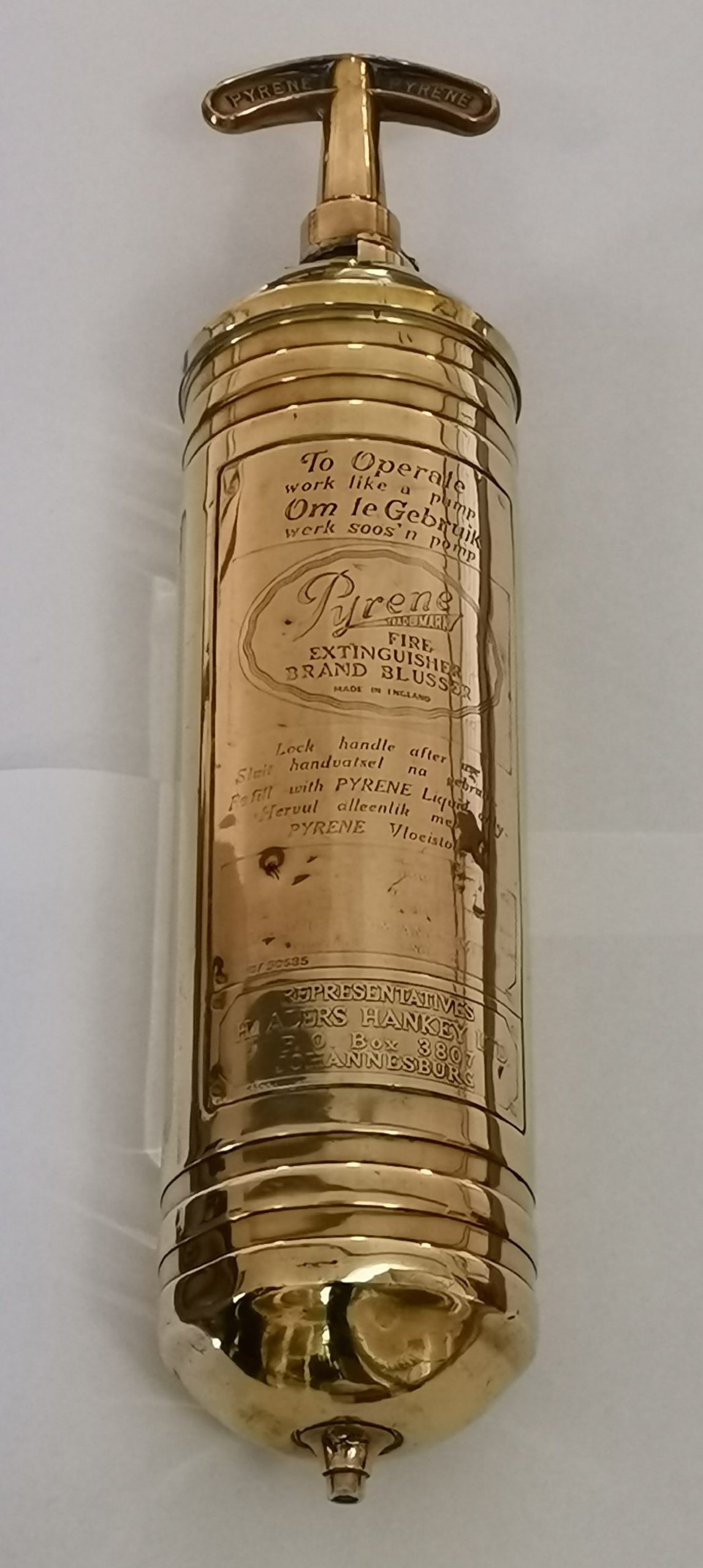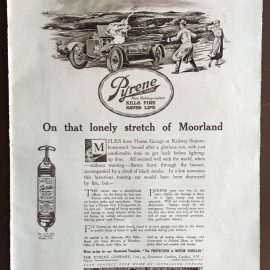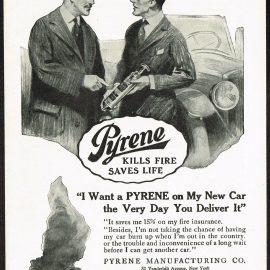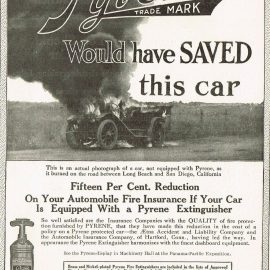
26 May Stories From the Stacks – The Fire Extinguisher
A new series about the museum’s motoring memorabilia, compiled and written by FMM’s Assistant Curator Sian Theron. We start with something a little offbeat in looking back at the development of ‘The early motorist’s friend’, the fire extinguisher…
Ever since Prometheus supposedly kindly gifted us mortals the gift of fire, we have been both fascinated and terrified of it. Although an extremely useful ‘element’ and largely responsible for the creation of many a technological marvel (like the motor vehicle), fire can also be most destructive and we have been finding ways to fight it going back beyond memory.
The first recorded (Western) account of a fire fighting tool goes back to 200BCE when a certain Ctesibius of Alexandria created a contraption using a pump action with which to extinguish fire. Between then and the modern era, fire extinguishing mediums didn’t evolve particularly quickly. The Great Fire of London in 1666 is recorded to have been fought with the use of ‘squirts’, which worked much like a syringe but on a larger scale. Various large pumps were later introduced and hauled by horse-drawn carriage to a conflagration where, by hand pumping, water was expelled to put out flames.
The first extinguisher, as we know it today, was invented in 1819 by Captain George William Manby, and comprised of a pressurised potassium carbonate solution. Since then the fire extinguisher has evolved considerably, and current designs are based on their effectiveness in fighting different classes of fire – eg electrical, metallic, liquids and gases, grease – and their environmental impact.
Motoring has long been associated with the dangers of fire. In the beginning, the internal combustion engine – a newfangled contraption that literally started with an explosion – was a source of much fear and took some time to be accepted. Many early motorists preferred steam powered alternatives despite its equal proclivity for eruption.
Early motor vehicles were manufactured out of easily combustible materials, with many sporting wooden panels and floorboards, as well as canvas canopies. Electrical sparks and malfunctions could be quite hazardous. Not only were vehicles more likely to go up in flames in the case of combustion, but in such an unfortunate occurrence, without immediate intervention very little car would be left! Intrepid motorists had to be proactive and carry fire fighting equipment along with them. It was quite common to have a small portable extinguisher in vehicles, with many suppliers marketing their products specifically to the motoring crowd.
The museum is fortunate enough to be the custodian of a variety of fire extinguishers covering most of the last century. In particular, and currently on display in Hall A, is a Pyrene brass canister. The Pyrene Company invented its product in the early 1910s. Its operation was based on the use of CTC (carbon tetrachloride), which removes oxygen when activated. These extinguishers were small and designed for use on small fires. They were not pressurised so could be refilled.
While highly effective against liquid and electrical fires (hence its popularity amongst motorists), the CTC used in a Pyrene extinguisher also releases phosgene gas, which is highly toxic when heated. To give an idea of its danger, phosgene was used in chemical warfare in the trenches during WWI. The Pyrene extinguishers led to the deaths of a few of their users when deployed in closed spaces. Nonetheless, due to their effectiveness, CTC extinguishers were used well into the 1940s until they were eventually banned in the 1950s due to their very real danger to health and safety.






